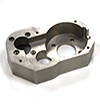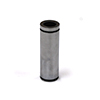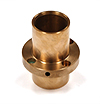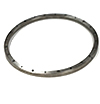Equator™ - gauging system applications

Browse gauge R&R
What is a gauge R&R study?
![]() ªÁ ÇÕ´ÔâͤÅÔ»ÊÒ¸Ôµ·Ó§Ò¹
ªÁ ÇÕ´ÔâͤÅÔ»ÊÒ¸Ôµ·Ó§Ò¹
The purpose of a gauge R&R study is to demonstrate the capability of a gauging device to measure a specific component.
Type 1 - simple repeatability trials with one operator, one part and multiple repetitions. The following values are used to indicate whether a measurement system is capable of measuring a feature consistently and accurately:
- Cg: Compares tolerance with measurement variation.
- Cgk: Compares tolerance with measurement variation and bias.
Both figures should be greater than 1.33 to show that the measurement system is capable, in some cases values greater than 1 might be acceptable. Cg indicates the spread of measurement values, Cgk also includes the bias, the offset of the group of measurement values from the nominal.
Type 2 - prove the measurements provided by the Equator system are repeatable and reproducible, regardless of operator, for a specific feature. Tests are performed with multiple operators, multiple parts and multiple repetitions. The measurement uncertainty due to the Equator for that particular feature is expressed as a percentage of the tolerance, in most cases this is expected to be lower than 10% but may be up to 20%.












